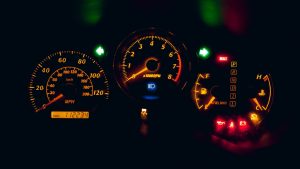Deciphering Your Dashboard Warning Signs
 It’s happened to all of us. We’re driving along, minding our own business, and then all of a sudden a warning light pops up on our dashboard. We don’t know what it means, so we start to panic! What if it’s something serious? In this blog post, we will discuss the most common dashboard warning lights and what they mean. By deciphering these warning signs, you can avoid costly repairs and keep your car running smoothly.
It’s happened to all of us. We’re driving along, minding our own business, and then all of a sudden a warning light pops up on our dashboard. We don’t know what it means, so we start to panic! What if it’s something serious? In this blog post, we will discuss the most common dashboard warning lights and what they mean. By deciphering these warning signs, you can avoid costly repairs and keep your car running smoothly.
Check engine light
One of the most common dashboard warning lights is the check engine light. This light can indicate a variety of different issues, so it’s important to have your car checked by a professional if this light comes on. Some common causes of the check engine light include a loose gas cap, a faulty oxygen sensor, or an issue with the catalytic converter.
Low tire pressure light
Another common warning light is the low tire pressure light. This light will come on if one or more of your tires is low on air. It’s important to check your tire pressure regularly, as driving on underinflated tires can cause them to wear out prematurely. If you see this light, be sure to check your tires as soon as possible and add air if necessary.
Battery light
The battery light is another common dashboard warning sign. This light indicates that your car’s battery is not being charged properly. If you see this light, it’s important to have your charging system checked by a mechanic. A faulty alternator or voltage regulator can cause the battery light to come on.
Brake light
The brake light is yet another dashboard warning sign. If this light comes on, it means that there is an issue with your car’s braking system. It could be something as simple as low brake fluid levels or a faulty brake pad. In either case, it’s important to have your brakes checked by a mechanic to avoid any accidents.
What should you do when a warning light comes on?
If you see a warning light on your dashboard, the first thing you should do is try to identify what the problem is. If you’re not sure, consult your owner’s manual or ask a mechanic. Once you’ve identified the issue, take action to fix it. If the problem is something minor, like a loose gas cap, you can probably fix it yourself. However, if the problem is something more serious, like a faulty alternator, you’ll need to take your car to a mechanic.
No matter what the issue is, it’s important to take dashboard warning signs seriously. By deciphering these warning signs, you can avoid costly repairs and keep your car running smoothly.
